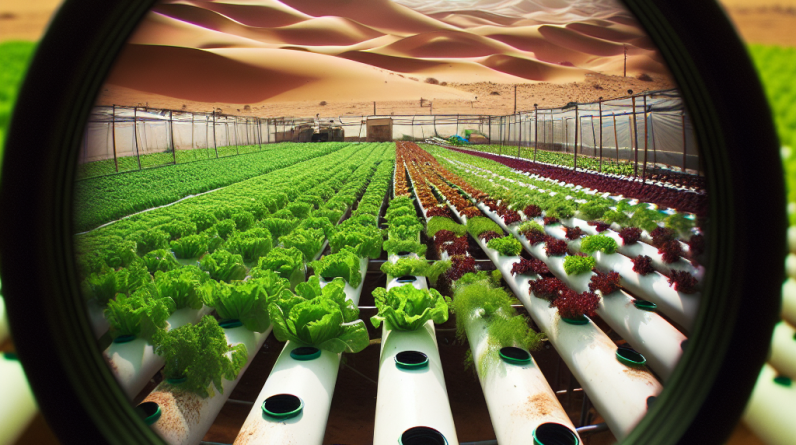
Understanding Food Deserts
Definition and Impact
Alright, let’s kick things off by talking about food deserts. These are areas where access to fresh, healthy food is scarce or non-existent, mostly due to limited grocery stores and food supply. So, if you find yourself living in one of these places, you might end up relying on convenience stores, which typically don’t offer much in the way of nutritious options. It’s a major issue, and it really impacts people’s health.
Living in a food desert can lead to poor dietary habits, contributing to obesity, diabetes, and other health issues. I mean, who wants to live on chips and soda? It’s not just about personal choice; the options simply aren’t there. That’s where hydroponics can swoop in like a superhero to save the day!
By growing food where it’s needed most, we can shift the narrative for people living in these areas. It’s about putting control back into the hands of local communities and giving them access to fresh produce without having to travel for miles.
The Hydroponics Advantage
Innovative Growing Techniques
So, hydroponics. What’s the deal? Basically, it’s a method of growing plants without soil. Yup, you heard me right! Instead of dirt, plants are grown in nutrient-rich water. This allows them to absorb all the essential nutrients they need to thrive. How cool is that?
One of the best parts about hydroponics is that it uses significantly less water compared to traditional farming. In fact, I’ve seen systems that use up to 90% less water! That’s not just good for your wallet but also for the environment. Plus, with controlled environments, you can grow crops in places where traditional agriculture wouldn’t even dream of succeeding.
And let’s be honest, anyone can do this. With a little bit of investment and some basic know-how, even novice gardeners can get in on the hydroponic action. It’s empowering and easy—trust me, once you see those greens growing, you’ll be hooked!
Creating Local Greenhouses
Building Infrastructure
A local greenhouse can change the game for communities battling food deserts. Think about it: a space dedicated to growing fresh produce right in the heart of your neighborhood! I’ve seen firsthand how manageable and fulfilling this can be when communities come together to make it happen.
Building a greenhouse isn’t as complex as it sounds. With some basic materials, you can set up your own space for growing delicious veggies and fruits. You don’t need to be an engineer to craft a simple structure—just some basic planning and teamwork usually do the trick!
Now, let’s talk about community involvement. It’s crucial! Getting locals on board not only fosters a sense of ownership, but it also ensures that the fresh produce is in line with what the community craves. And you know what’s great? When people work together, they build relationships that last a lifetime.
Education and Training
Sharing Knowledge
Knowledge is power, right? So once the local greenhouse is up and running, it’s time to spread that hydroponic wisdom! Workshops, seminars, and local classes can help equip community members with all the tools they need to succeed with their projects. I’ve seen how much enthusiasm people bring when they learn something new!
By teaching folks about plant biology, nutrient solutions, and how to maintain a hydroponic system, we can generate a ripple effect of growth—not just for plants, but for people too! With the right education, community members can become self-sufficient and produce their own food without having to rely on external sources. That’s empowerment!
Plus, who knows how many gardening enthusiasts you might inspire? It’s fun to grow a community of gardeners that can share seeds, plants, and the occasional gardening tip. You’ll build connections with others who share your passion while making a difference in the local food supply.
Sustainable Practices for Success
Using Resources Wisely
Finally, we can’t ignore the importance of sustainability in this whole venture. No one wants to set up a hydroponic system that’s going to drain resources or harm the planet! It’s all about using what we have wisely, right? Growing food this way promotes sustainability by reducing the carbon footprint associated with transportation of food into these communities.
A great way to ensure sustainability is by implementing renewable energy sources, like solar panels, to power your greenhouse. It’s not only good for the environment, but it’ll save you money in the long run. I’ve tried this approach myself, and the results were just fantastic!
Engaging the community in sustainable practices is equally essential. From composting any organic waste to integrating recycling programs, it’s crucial to foster an ethos of sustainability that goes beyond just the garden. As we learn to treat our waste properly, we can transform it into valuable resources for the future!
FAQs
What are food deserts?
Food deserts are areas that lack access to fresh, healthy food options, making it challenging for residents to obtain nutritious food.
What is hydroponics?
Hydroponics is a method of growing plants without soil, using nutrient-rich water to support plant growth.
How can local greenhouses help communities?
Local greenhouses provide fresh produce, create jobs, and foster community engagement while addressing food insecurity in the area.
Why is education important in hydroponics?
Education in hydroponics equips individuals with essential knowledge and skills to maintain growing systems, enhancing self-sufficiency and food production.
How can sustainability be incorporated into hydroponic systems?
Sustainability can be integrated by using renewable energy sources, recycling, composting organic waste, and minimizing water use in the hydroponic process.







